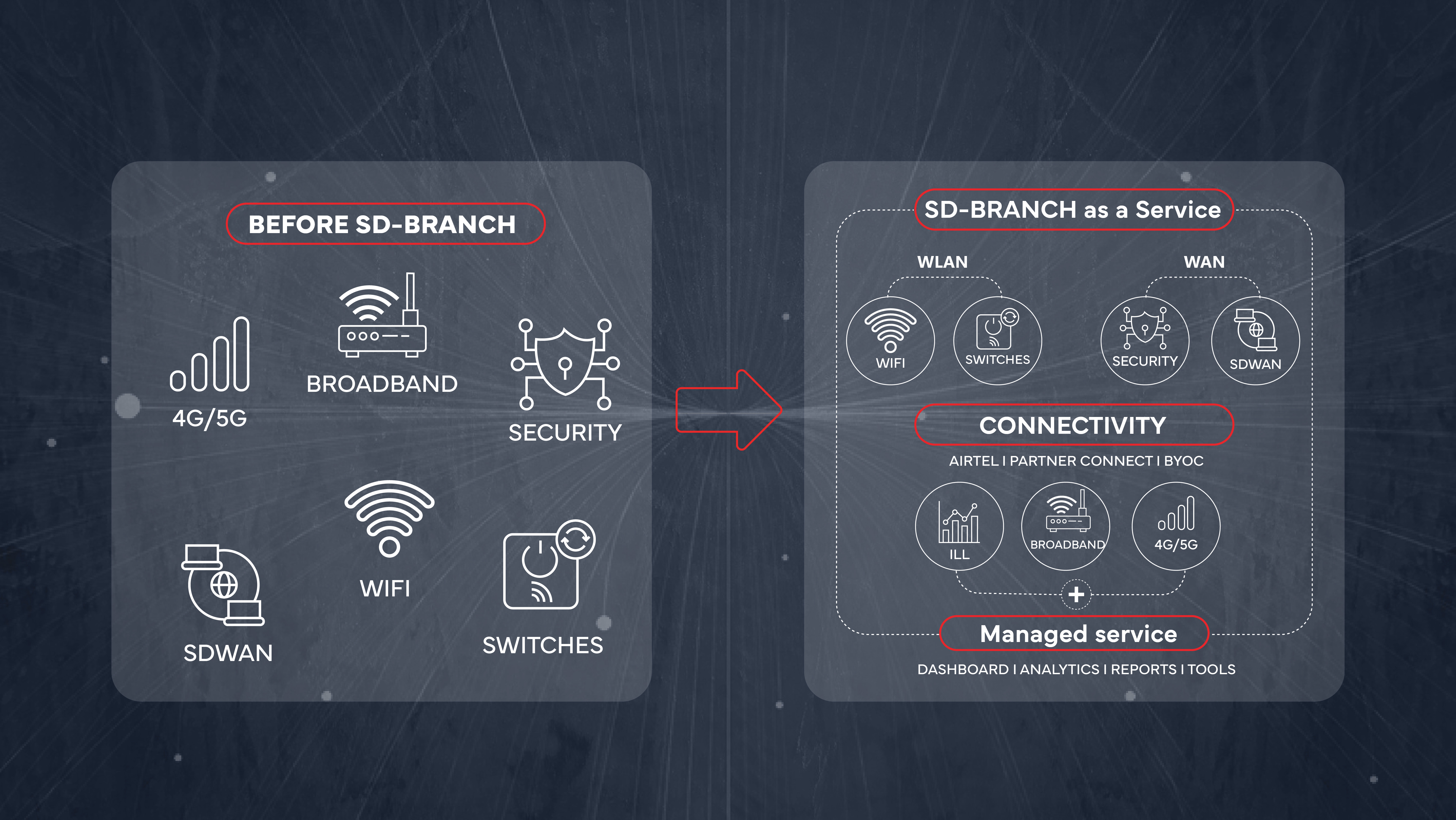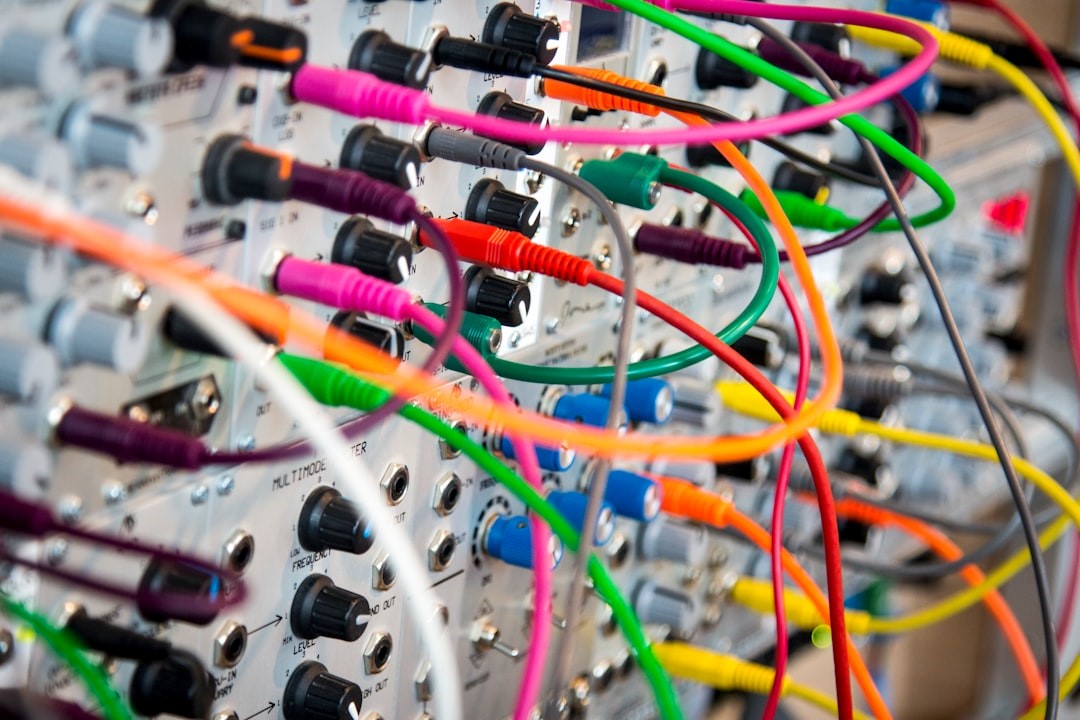SD-Branch Demystified: How it’s Transforming Network Management in India
-
March 26, 2025
-
4 min read

In the dynamic business environment of 2025, Indian enterprises are navigating an era marked by rapid digital transformation, exponential data growth, and an increasingly complex cybersecurity landscape. The directive is clear for senior IT management, Chief Information Officers (CIOs), and Chief Technology Officers (CTOs): promote innovation, guarantee a strong network management transition, and preserve operational effectiveness—all while controlling expenses and scalability. Software-defined branch (SD-Branch), redefines network management and provides a competitive edge in this environment, stands out as a crucial solution to these problems.
Making It Real: SD-Branch Advantages Across Business Archetypes
For Multi-Location Presence: Retail, NBFCs, and Distributed Customer-Facing Branches
Specifically for organisations grappling with scale, speed, and customer experience—all while trying to manage IT complexities across diverse locations.
- Faster Rollouts, Quicker Go-Lives – Traditional network provisioning delays expansion. SD-Branch accelerates site setup via zero-touch provisioning and plug-and-play architecture.
- End-to-End Visibility and Centralized Control – Multi-store networks suffer from fragmented insights. With SD-Branch, IT teams gain a single-pane-of-glass view for all branches—eliminating blind spots.
- Superior Application Experience – POS, inventory, billing, CRM—these systems demand low latency. SD-Branch ensures optimal performance through smart routing and bandwidth prioritization.
- Integrated Security and Surveillance – Rather than disparate security protocols, SD-Branch provides branch-wide threat protection, video surveillance integration, and access controls under one framework.
- Optimized OPEX per Branch – In cost-sensitive environments, SD-Branch delivers savings through centralized management and reduced hardware dependency—enabling you to scale efficiently.
For Large Scale Workspaces and Campuses
For businesses dealing with high device density, edge computing demands, and critical uptime requirements.
- Real-Time Industrial Connectivity – Factory floors, logistics hubs, and IT campuses need stable, high-speed connectivity. SD-Branch ensures availability via multi-access (Broadband, ILL, 4G/5G) and intelligent failover.
- IoT-Ready Infrastructure – With devices proliferating across operations, SD-Branch simplifies endpoint management and secures data traffic without additional overhead.
- Network Resilience and Automation – Proactive issue detection, AI-led automation, and self-healing networks help mitigate downtime and enhance productivity across critical locations.
- Security at the Core – SD-Branch integrates identity-based access, firewalling, encrypted tunnels, and centralized policy enforcement to protect business-critical applications and data.
- Seamless ERP/CRM Access – SD-Branch ensures secure local internet breakout—enabling faster access to cloud-based ERP, CRM, and collaboration platforms from even remote industrial units.
SD-Branch Solutions: Market Trends and Adoption in India
In India, the uptake of SD-Branch solutions is significantly increasing:
The anticipated growth of the market: The global SD-Branch market is projected to increase at a Compound Annual Growth Rate (CAGR) of 32.7% from 2024 to 2033, reaching a value of about USD 18.37 billion.
- Strategic Implementations: As part of their adoption strategy for Secure Access Service Edge (SASE), more than 54% of large Indian organisations intend to deploy SD-Branch and Zero Trust Network Access (ZTNA).
- Network transformation catalyst: By tackling growing network complexity and the requirement for uniform service quality across regions, SD-WAN’s ascent catalyses India’s successful network management reform.
Just what you’ve been hoping for: Benefits Driving SD-Branch Architecture Adoption
- Network management that is centralised and simplified – SD Branch makes Centralised supervision and control possible by unifying network functions into a single platform. This integration gives IT personnel thorough visibility into network performance across all branches, streamlines administrative processes, and lowers the possibility of setup errors.
- Increased Flexibility and Scalability – SD-Branch solutions provide the flexibility to scale network resources in tandem with business expansion. Businesses may quickly adapt their network architecture to accommodate new sites or integrate new services, guaranteeing that technological capabilities keep up with organisational expectations.
- Enhanced Performance and User Experience – SD-Branch deployments are characterised by reduced latency and optimised data routing. These enhancements improve application performance, raising customer satisfaction and employee productivity, two critical aspects of maintaining a competitive advantage.
SD-Branch: A Game-Changer for Indian Enterprises
SD-Branch is a game-changing solution for Indian businesses facing the complex problems of contemporary digital ecosystems. In addition to making network management easier, its capacity to combine various network operations into a unified, centrally controlled platform satisfies the ever-changing demands of the modern business environment. Adopting SD-Branch solutions is seen by CIOs, CTOs, and senior IT leaders as a strategic decision that sets up the company for long-term success in an increasingly digital world rather than just a technical advancement.
 Share
Share









